Example 1
Perform three approximations using Euler's method for the IVP
y(0) = 1
y(1)(0) = 2
with a step size of h = 0.1.
Using the rewritten derivative
we may calculate:
y2 = y1 + h f(h, y1) = (1.41, 2.1900166583)T
y3 = y2 + h f(2h, y2) = (1.62900166583, 2.2731463936)T
Consequently, the approximation of the solution comprises the points
and the derivatives at these points are 2, 2.1, 2.1900166583, and 2.2731463936, respectively.
Example 2
Perform two approximations using Heun's method for the IVP
y(2) = 1
y(1)(2) = 2
y(2)(2) = 3
with a step size of 0.1
In the theory section, we saw that this IVP can be converted into the system
and therefore, we may calculate:
K1 = f( h, y0 + hK0 ) = (2.3, 4.3, 18.17)T
Therefore,
To approximate the next point, we repeat the process:
K1 = f( 2h, y1 + hK0 ) = (2.82085, 6.47975, 26.80633)T
Therefore,
Consequently, the approximations to the solution are (0, 1), (0.1, 1.215), and (0.2, 1.4742925).
The derivatives at these three points are 2, 2.365, and 2.9169125, respectively, and the Nd derivatives at these points are 3, 4.5585, and 6.8594415, respectively.
Example 3
As an example of a stiff differential equation, you saw the Van der Pol 2nd-order ordinary differential equation:
We can rewrite this in the desired form:
Let μ = 0.3 and let the initial conditions be y(0) = 0.7 and y(1)(0) = 1.2 and therefore, we may convert this to the system:
and
with the initial conditions
For simplicity, we will explicitly solve this system using multiple steps of Euler's method. We deliberately choose a very small value of h = 0.1 to avoid the stiff properties of this ODE and we define ti = ih. Thus, for i = 1, 2, ..., 1000, we will solve:
Therefore, for the first step, we have:
The next three iterations are
The term of primary interest is the first of each of the points. If we plot the points (ti, yi, 1), we get the oscillating curve in Figure 1.
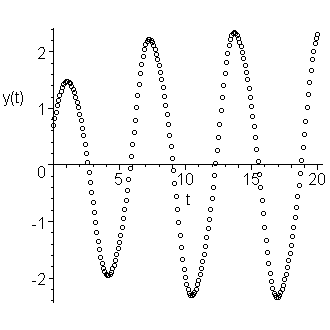
Figure 1. An approximation of the solution to our IVP.
Rather than plotting the points, we can connect the points with a line, as is shown in Figure 2.
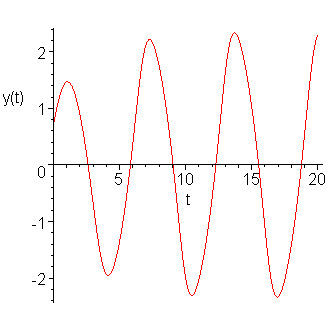
Figure 2. Plotting the approximation as a function.
If we plot (ti, yi, 2), we have an approximation to the derivative:
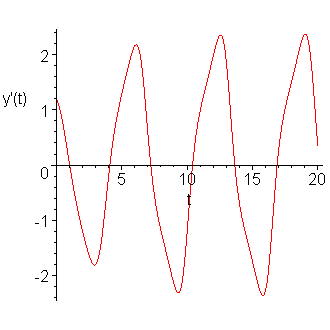
Figure 3. Plotting the approximation to the derivative of the solution to the IVP.
There appears to be a strong relationship between y(t) and y(1)(t): this can be seen by plotting the solutions yi, as is shown in Figure 4.
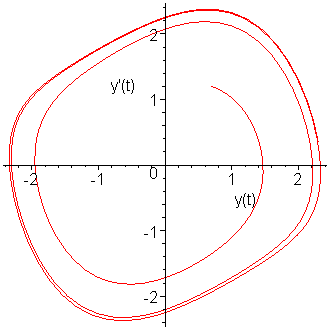
Figure 4. Plotting the vectors yi.
These appear to be approaching a cyclic limit. If we plot the points y1935 through y2000, we note that the points form almost a perfect closed loop, as is shown in Figure 5.
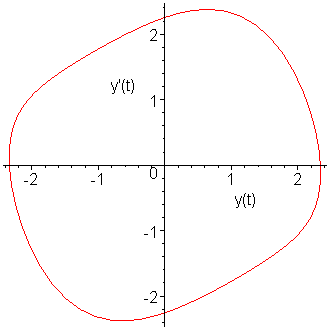
Figure 5. The limit cycle of our IVP.
Example 4
Consider a circuit with a single loop with an inductor of of 1 H, a resistor of 10 Ω and a capacitor of 0.25 F. If the system is initially at rest, and at time t = 0, a voltage force of x(t) = sin(t) for t ≥ 0 is applied. Solve for the current y(t) moving through the loop. This circuit is shown in Figure 6.
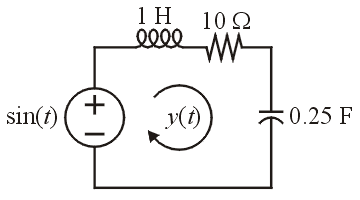
Figure 6. A linear circuit with an inductor, resistor, and a capacitor.
This system is described by the differential equation:
y(0) = 0
y(1)(0) = 0
Again, we rewrite the ODE as
and define
with the initial conditions
The transfer function of this system is H(z) = z/(z2 + 10z + 4), and therefore, the solution will approach y(t) = &re;(H(j) ejt) = 10/109 cos(t). We will see if the numerical result is equivalent.
Seeing that cos(t) has a period of 2π, it would be appropriate to, once again, use h = 0.1. Thus, with
we find
Iterating many times, we get the approximation of the solution shown in Figure 7.
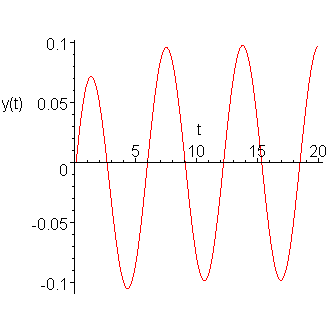
Figure 7. The solution to the forced circuit.
If we plot the approximations of the solution versus the derivative, we get the image in Figure 8.
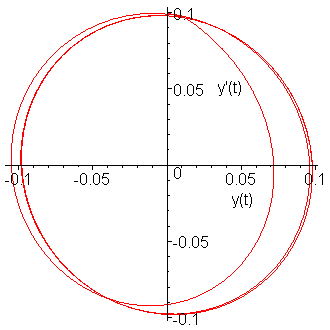
Figure 8. The solution versus the derivative.
From your circuits courses, you should expect such behaviour.
The maximum current should be 10/109 A, however, if we find the maximum approximate value of the current is 0.0980737, which is slightly greater than the expected maximum current.
Copyright ©2005 by Douglas Wilhelm Harder. All rights reserved.


